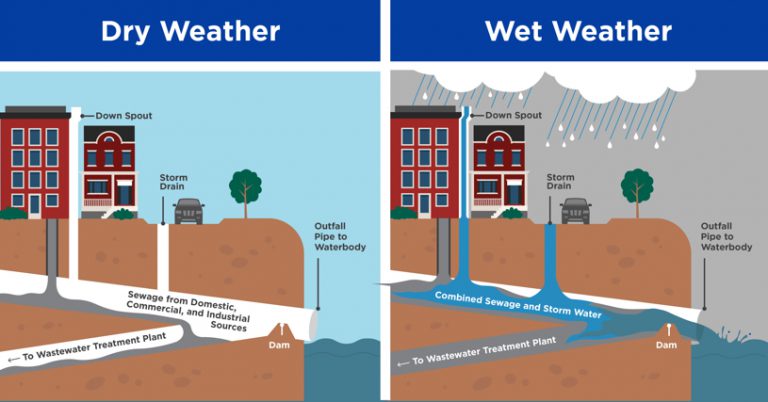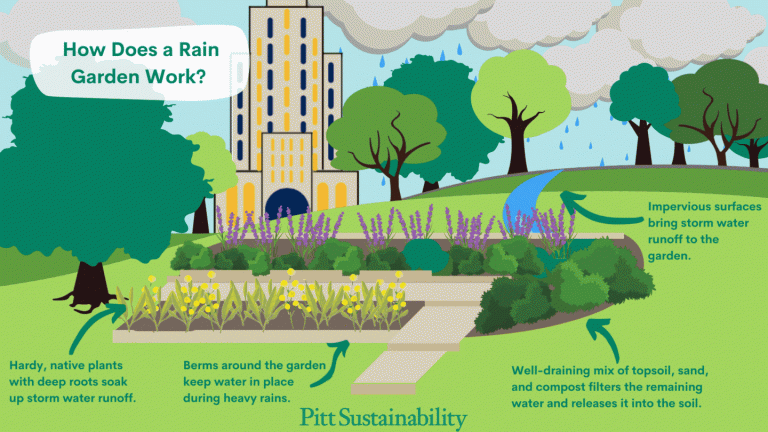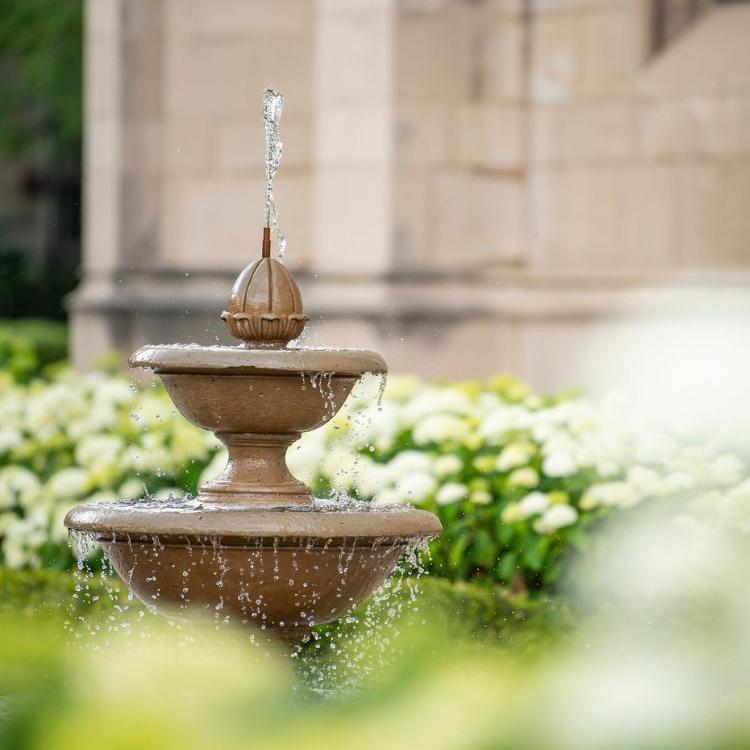
The University of Pittsburgh strives for responsible consumption of both potable and nonpotable water on-campus. Specific Pitt Sustainability Plan goals include:
- Strive toward a water neutral campus, with a 3% reduction in water use by 2020 from 2017 baseline. (Achieved in 2020)
- Embrace Pittsburgh 2030 District goals of 50% reduction below the district average in water use intensity (consumption per square foot) by 2030 and establish design standards and operational practices to achieve them.
Low flow plumbing fixtures are installed and being upgraded across campus in support of Pitt’s goal to reduce water use intensity 50% by 2030.
Water Quality
The University of Pittsburgh is committed to a safe and healthy campus, including ensuring clean drinking water for everyone in the community. Pitt’s Environmental Health and Safety department and Office of Facilities Management proactively test and monitor water quality in Pittsburgh campus buildings. The University follows national testing protocols and uses a third-party laboratory for drinking water testing, including monitoring for heavy metals (e.g., lead).
Water to Pitt’s Pittsburgh campus is supplies by the Pittsburgh Water and Sewer Authority (PWSA). Information on Pittsburgh’s water quality can be found on PWSA’s water quality reports and community lead response information pages.
Stormwater
With climate change heavier and more frequent storms hitting our region, intense rains are overwhelming our current infrastructure. This makes stormwater management a growing concern throughout Pittsburgh.
Pitt is dedicated to stormwater management practices to help protect our local water ways from sewage overflows and preventing flooding. By 2030 Pitt will reduce impervious surfaces by 20% from 2017 baseline and divert 25% of stormwater from remaining surfaces to rain gardens, bioswales, or rainwater harvesting tanks.
Pittsburgh has a combined sewer system which collects rainwater runoff, domestic sewage, and industry wastewater into a single pipe. When heavy rainfalls occur the volume of water can overwhelm the system causing untreated stormwater and wastewater to bypass treatment plants and be discharged directly into waterways.

Pitt is dedicated to growing green stormwater infrastructure on campus. Pitt has 10 rain gardens and 9 green roofs on campus that detain and absorb excess rainwater, enabling it to naturally infiltrate into and nourish the soil, while helping mitigate Pittsburgh’s combined sewer overflow (CSO) issues.
Rain Gardens
- Bigelow Boulevard – features a series of rain gardens.
- Cathedral Rain Garden – Is very visible, located on the Cathedral lawn between Heinz Chapel and the log cabin.
- Petersen Events Center Rain Garden – Includes 4 rain gardens, 1 of which was the University’s first rain garden which came to fruition form ideas initiated by students; it now also hosts a solitary bee house.
- Salk Hall Annex Rain Gardens (2)
- Scaife Hall - Cascading stormwater management feature planted with native species along Lothrop Street. (2023)
- Sutherland Hall Rain Garden

Green Roofs
- Green Roofs: Benedum Hall and Falk School
- Pollinator Patios: Barco Law, Hillman Library, Nordenberg Hall, and Posvar Hall
- Partial Roof Plantings: Forbes Hall, Posvar Hall, Schenley Quad
Rainwater Reuse
The University of Pittsburgh’s draft stormwater master plan is complete and under internal review. This plan identifies major rainwater capture, storage, and reuse initiatives.
A large cross-campus rainwater capture and reuse system is in various stages of design, construction, and operation will capture and reuse treated rainwater as for make-up water at our central utility plants.
The first phase of the multi-phase stormwater improvement plan is the Upper Campus Chilled Water Plant project, which includes a 250,000 gallon underground cistern adjacent to the building, which is networked with additional rainwater capture cisterns being installed on upper campus.
The plan’s second phase include future Posvar Chilled Water Plant upgrades and installing an underground rainwater collection tank and distribution piping that will connect to piping under Bigelow Boulevard for a campus-wide rainwater reuse network.
Given the City of Pittsburgh’s combined sewer overflow (CSO) system (which is under consent decree with the U.S. EPA), the new Pitt system will lessen the regional burden on both the CSO system and local potable water infrastructure.
Since 2001, the University of Pittsburgh has also used underground aquifer water (tapped into during the construction of Sennott Square) to water planted areas and hanging baskets around campus that require irrigation. in 2001, and designers took advantage of this by installing an access point to collect the water for use on campus. This Pittsburgh aquifer runs from Herron Hill to Schenley Park; the use of this untreated water to help sustain ecological systems reduces the amount of municipal water consumed and has a lower impact on the environment.

